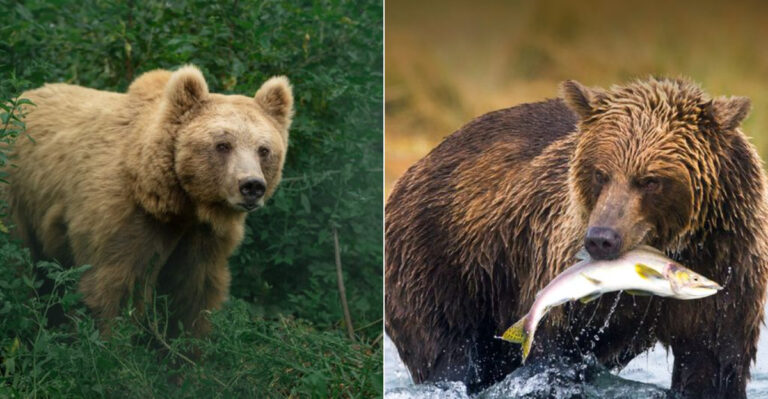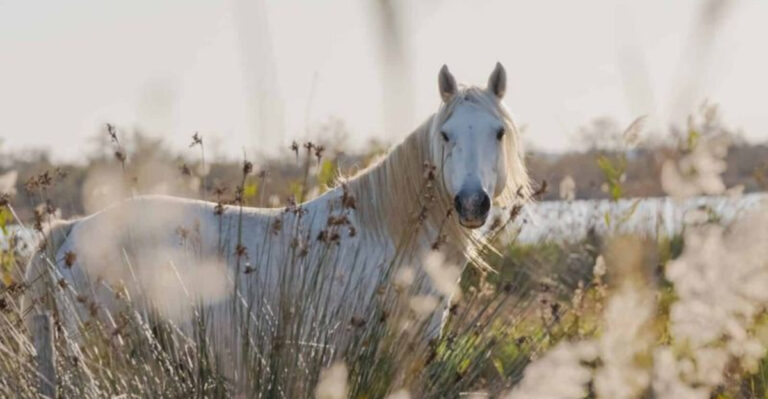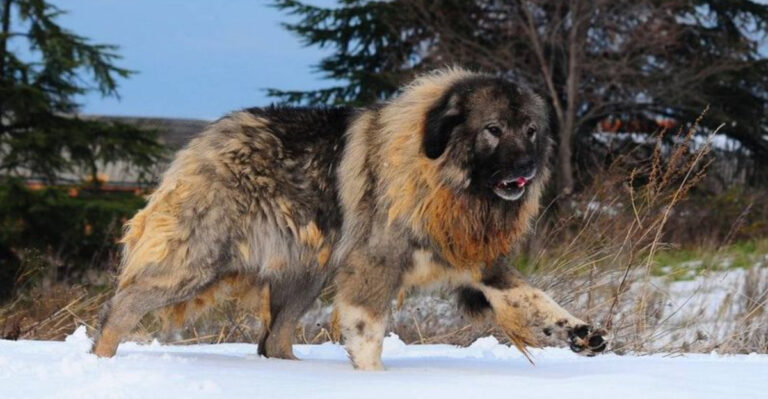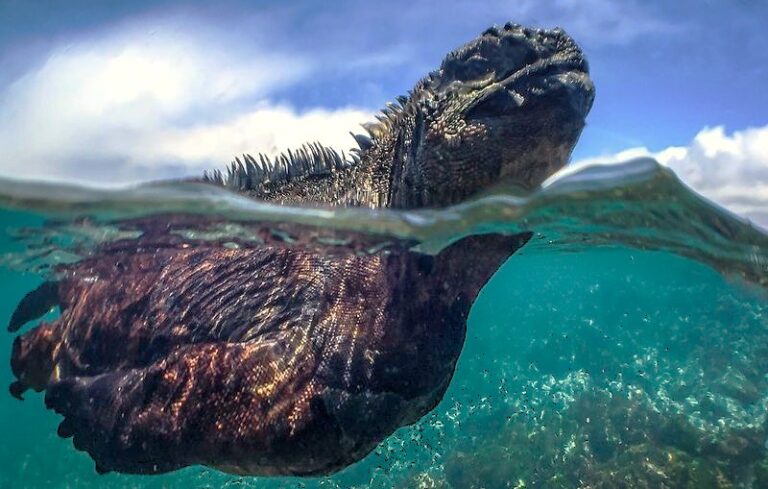15 Most Iconic North American Wildlife Species
North America, a continent brimming with diverse ecosystems, offers a splendid showcase of wildlife that captivates the imagination of nature enthusiasts.
From the majestic peaks of the Rockies to the serene shores of its expansive coastlines, the animal kingdom here is nothing short of iconic. Whether furry, feathered, or finned, these creatures symbolize the wild heart of this vast land.
Embark on a journey through of the most iconic wildlife inhabitants that call North America home, each with their own stories and splendor.
1. Bald Eagle
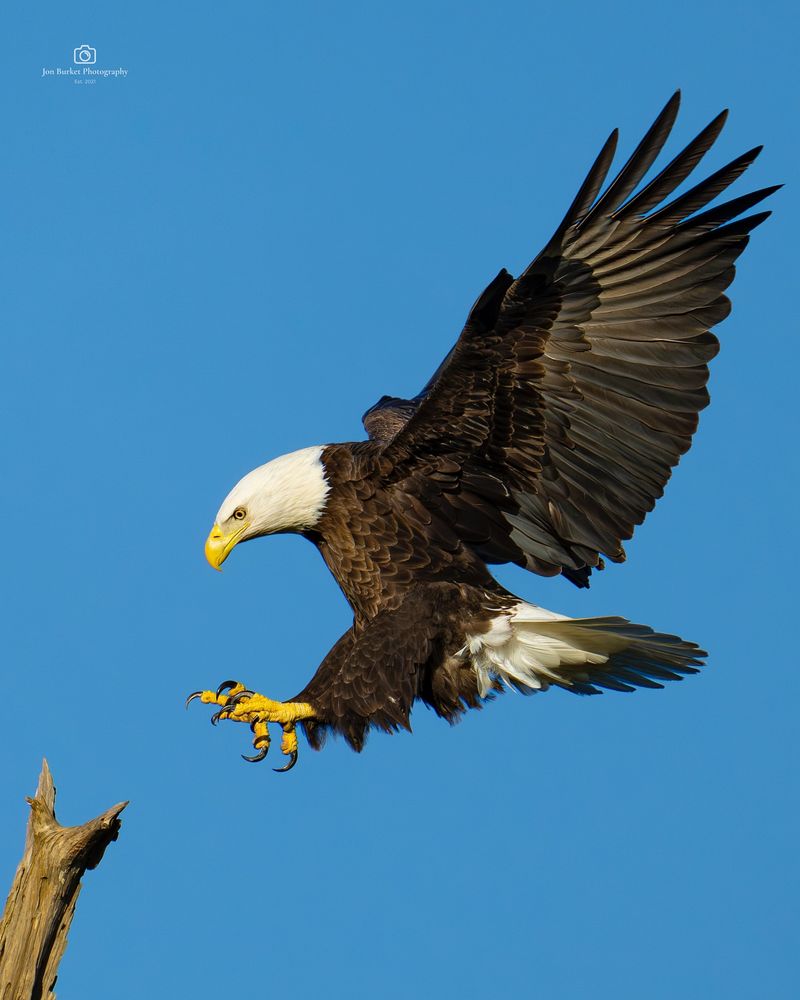
The bald eagle, a symbol of freedom, takes flight over North American skies with grace and majesty. This iconic bird of prey, with its striking white head and tail feathers contrasting a dark brown body, is an emblem of the United States.
Found near large bodies of open water, bald eagles prefer habitats rich in fish. With a wingspan reaching up to 7.5 feet, they are formidable hunters, often swooping down to snatch fish from the water’s surface. Their keen eyesight allows them to spot potential prey from miles away.
While primarily fish-eaters, they also consume small mammals and carrion. The bald eagle faced population decline due to DDT pesticide use but has since made a remarkable comeback. Conservation efforts have helped their numbers soar once again, allowing them to reclaim their skyward throne.
Today, spotting a bald eagle in the wild is a breathtaking experience, reminding us of nature’s resilience.
2. American Bison
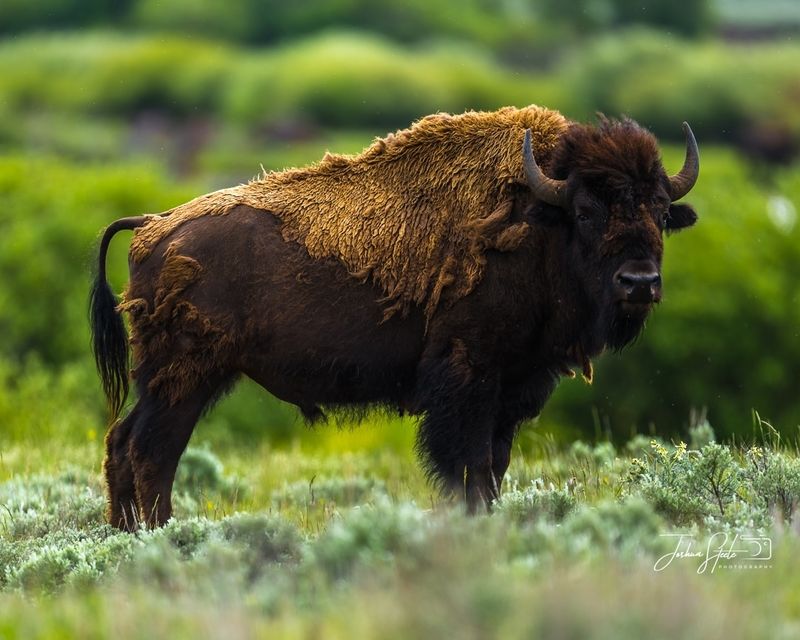
Roaming the vast plains of North America, the American bison is a true heavyweight champ of the animal kingdom. With their massive heads and characteristic humped shoulders, bison are built like tank-like herbivores that once numbered in the millions.
These gentle giants were crucial to the livelihood of Indigenous peoples, providing food, clothing, and tools. During the 19th century, however, they were hunted to near extinction. Thankfully, conservation efforts have brought them back from the brink, allowing herds to roam protected areas today.
Bison engage in a ritual called wallowing, where they roll in the dust to deter pests and mark their territory. Their presence on the plains is a powerful reminder of the American wilderness’s untamed spirit.
Whether seen munching on grass or thundering across open fields, the American bison is a testament to nature’s ability to endure.
3. Grizzly Bear
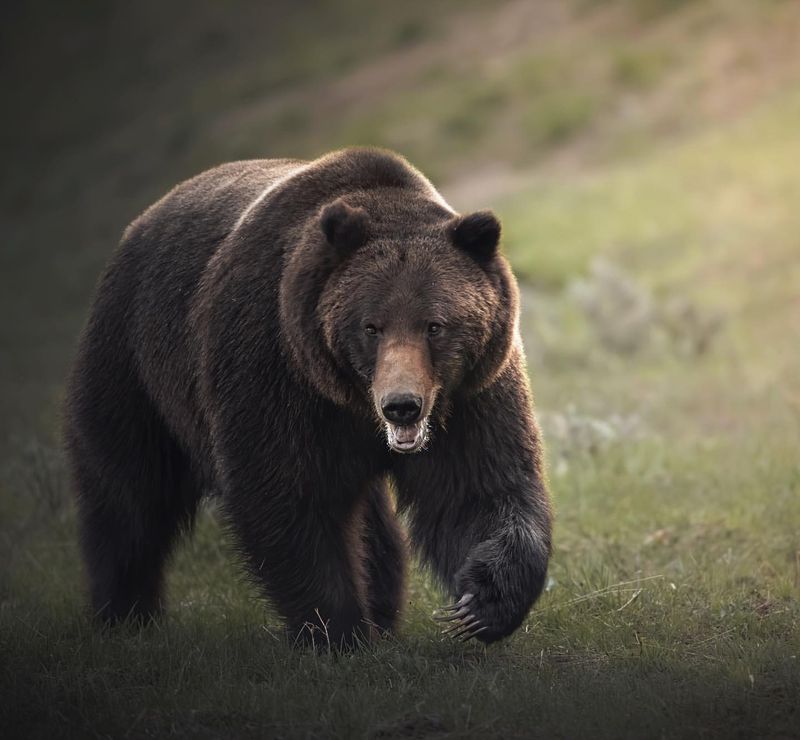
In the wilds of North America, the grizzly bear reigns as both a symbol of strength and a master of survival. These formidable creatures, with their distinctive hump and powerful build, are a sight to behold, especially in the rugged landscapes of Alaska and western Canada.
Grizzlies are highly adaptable, feasting on anything from berries to salmon. Their fishing skills are legendary, often seen standing in rivers patiently waiting to catch a meal. Despite their size, grizzlies can run at speeds of up to 35 mph, showcasing their remarkable agility.
Grizzly bears play a crucial role in their ecosystems, spreading seeds and fertilizing plants. However, they face threats from habitat loss and climate change. Conservation efforts continue to ensure these magnificent animals remain part of North America’s wildlife tapestry.
Encountering a grizzly in its natural habitat is an unforgettable experience, blending awe with a dash of adrenaline.
4. Gray Wolf
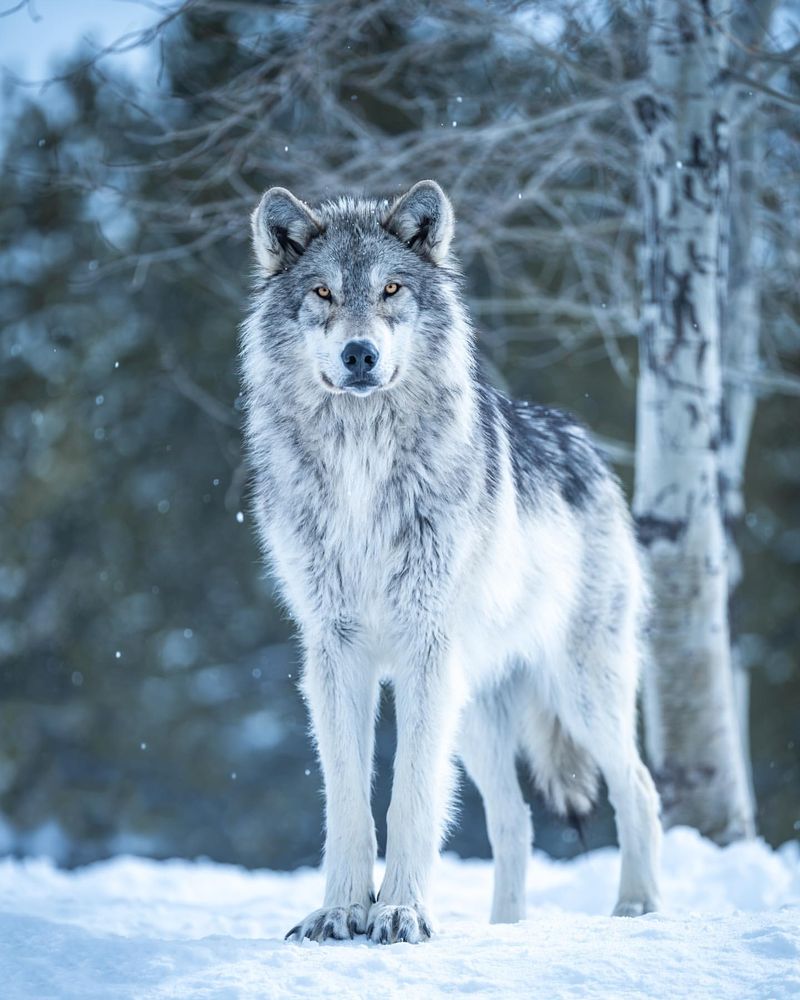
When it comes to teamwork, no one does it better than the gray wolf pack. These intelligent and social creatures roam North America’s forests, grasslands, and tundra, showcasing their prowess as apex predators.
Gray wolves communicate through a series of howls, barks, and body language, strengthening their pack bonds. With a diet primarily consisting of large ungulates like deer and elk, they are crucial in maintaining the ecological balance of their habitats.
Once nearly wiped out due to hunting and habitat loss, gray wolves have made a remarkable recovery in certain areas thanks to reintroduction programs. Spotting a wolf in the wild is a rare and magical experience, an echo of the untamed wilderness that still thrives in North America.
Their presence is a reminder of a time when wild animals ran free, undisturbed by the ever-expanding reach of human civilization.
5. Moose
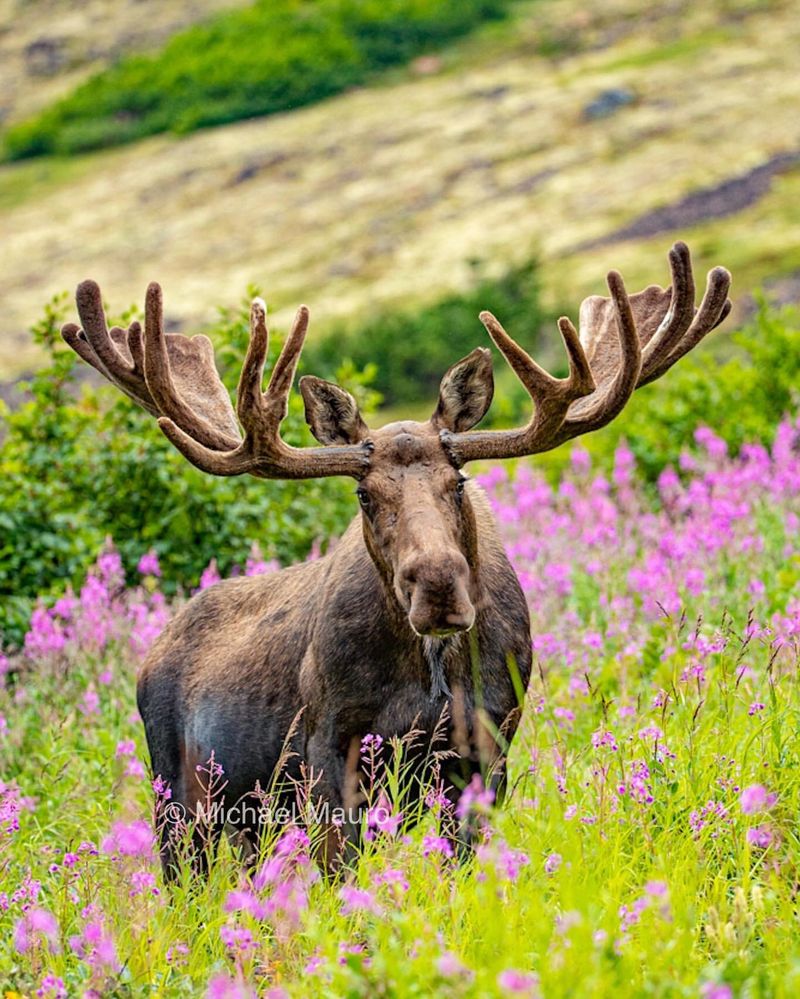
Standing tall and proud, the moose is an iconic symbol of North America’s northern forests and wetlands. With their long legs and impressive antlers, moose are the largest members of the deer family, captivating wildlife enthusiasts with their sheer size and elegance.
Moose are excellent swimmers, often seen traversing lakes and rivers in search of aquatic plants. Their diet consists mainly of leaves, bark, and twigs, making them adept foragers in their wooded habitats. Despite their size, moose are surprisingly elusive, often blending seamlessly into the forest backdrop.
Females, known as cows, fiercely protect their calves from predators, showcasing their maternal instincts. Though typically solitary, moose gather during the mating season, where bulls clash antlers in dramatic displays.
6. Polar Bear
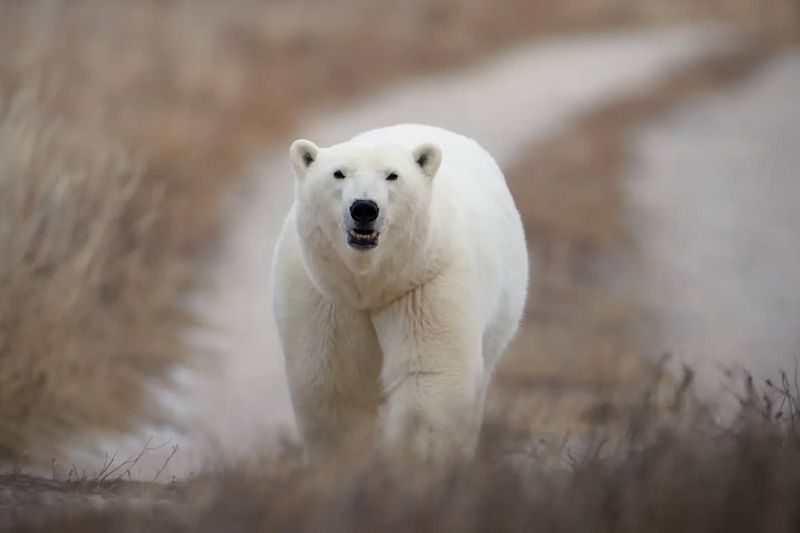
When it comes to surviving the harsh Arctic conditions, the polar bear is the ultimate master. These majestic predators, with their thick white fur and formidable presence, command the icy landscapes of northern Canada and Alaska.
Polar bears primarily hunt seals, relying on sea ice as a platform to catch their prey. Their swimming prowess is unmatched, with some bears covering hundreds of miles in search of food.
Despite their solitary nature, mother polar bears are dedicated caregivers, nurturing their cubs until they’re independent. Climate change poses a significant threat to these magnificent creatures, as melting sea ice reduces their hunting grounds.
Conservation efforts aim to mitigate these effects and preserve the polar bear’s habitat. Witnessing a polar bear in the wild is a humbling experience, illustrating the vulnerability and resilience of wildlife in our changing world.
7. Mountain Lion
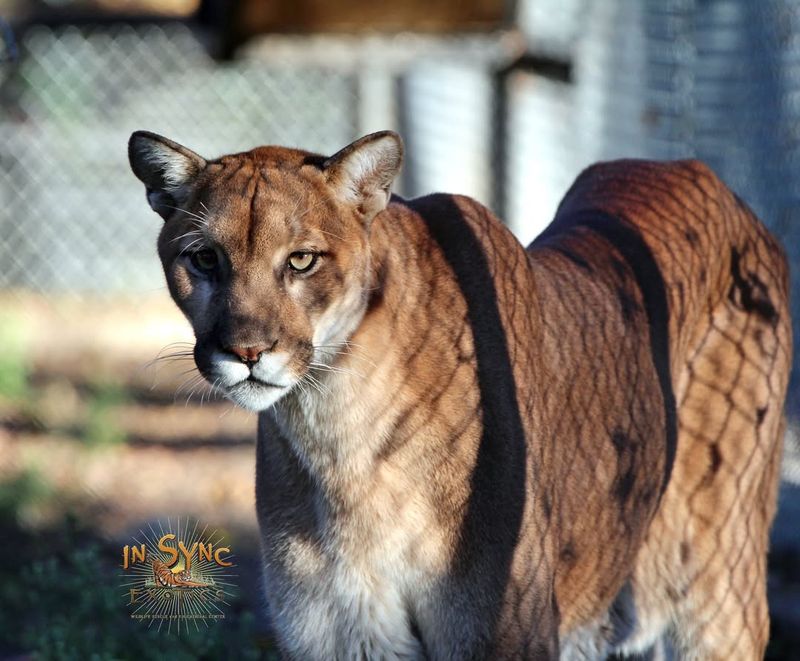
With a silent grace and keen hunting skills, the mountain lion prowls through North America’s diverse landscapes. Also known as cougars or pumas, these solitary big cats are masters of stealth and adaptability.
Mountain lions inhabit a range of environments, from dense forests to arid deserts, showcasing their incredible adaptability. Their diet includes deer, elk, and other mammals, which they skillfully hunt using stealth and power.
Despite their preference for solitude, they play a vital role in controlling prey populations. Due to habitat encroachment and conflicts with humans, mountain lions face numerous challenges. However, their elusive nature makes them difficult to study, often leaving only tracks as evidence of their presence.
Spotting a mountain lion is a rare and thrilling encounter, a reminder of the wild’s untamed beauty and the delicate balance between predator and prey.
8. American Alligator
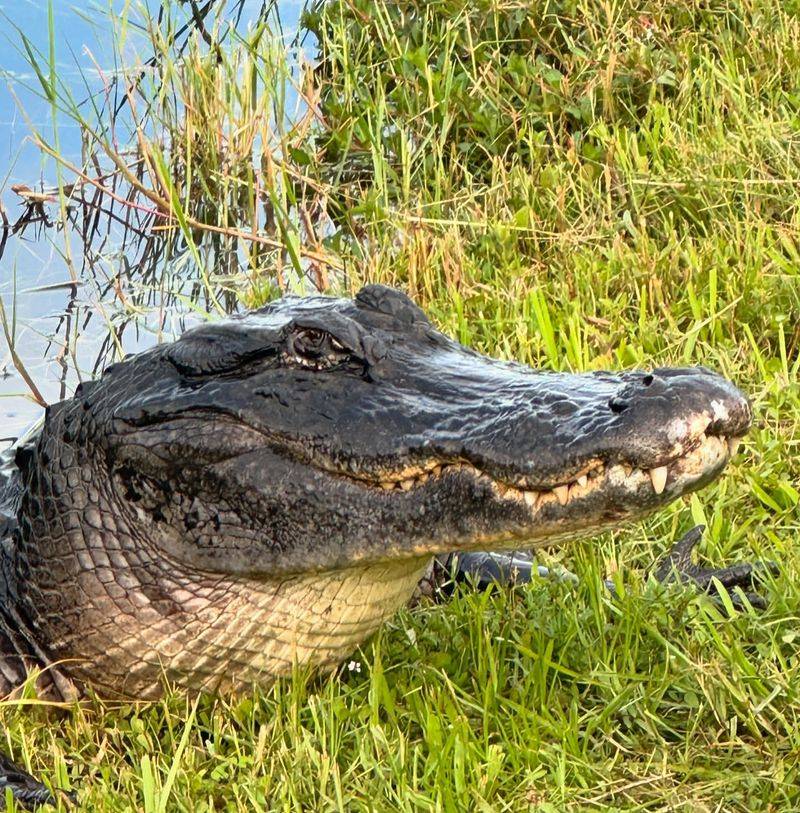
Lurking in the warm waters of the southeastern United States, the American alligator is a formidable prehistoric relic. These reptiles, with their armored bodies and powerful jaws, are a testament to survival through the ages.
Alligators are primarily found in freshwater environments such as swamps, marshes, and rivers. They play a crucial role in their ecosystems, controlling prey populations and creating habitats for other species.
With a diet ranging from fish to mammals, they are opportunistic hunters, capable of impressive bursts of speed despite their bulky appearance. Despite their fearsome reputation, alligators are generally shy and avoid humans.
Conservation measures have helped their populations rebound from previous declines due to habitat loss and hunting. Encountering an alligator in its natural habitat offers a glimpse into a world where ancient creatures still roam, reminding us of life’s enduring tenacity.
9. North American Beaver
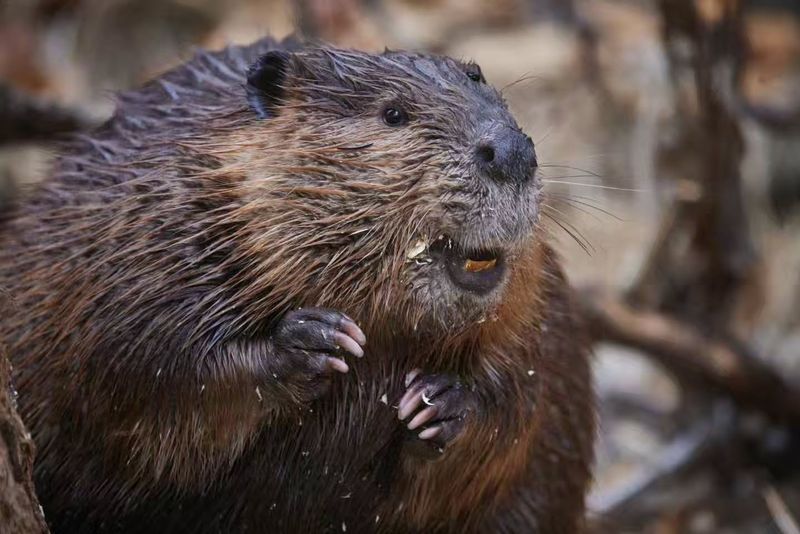
Enter the industrious world of the North American beaver, nature’s remarkable engineer. These resourceful rodents transform landscapes with their intricate dam-building skills, creating habitats for countless species.
Beavers are known for their large, flat tails and sharp incisors, which they use to fell trees and construct lodges. Their work creates ponds that benefit local ecosystems, providing homes for fish, birds, and amphibians.
Despite their size, beavers are gentle creatures, relying on their environment for sustenance and shelter. Once heavily hunted for their fur, beavers have made a remarkable comeback through conservation efforts.
Their presence in the wild is a testament to ecological balance and resilience. Watching a beaver at work is like witnessing nature’s own construction crew, as they tirelessly craft their watery abodes, one branch at a time.
10. Raccoon
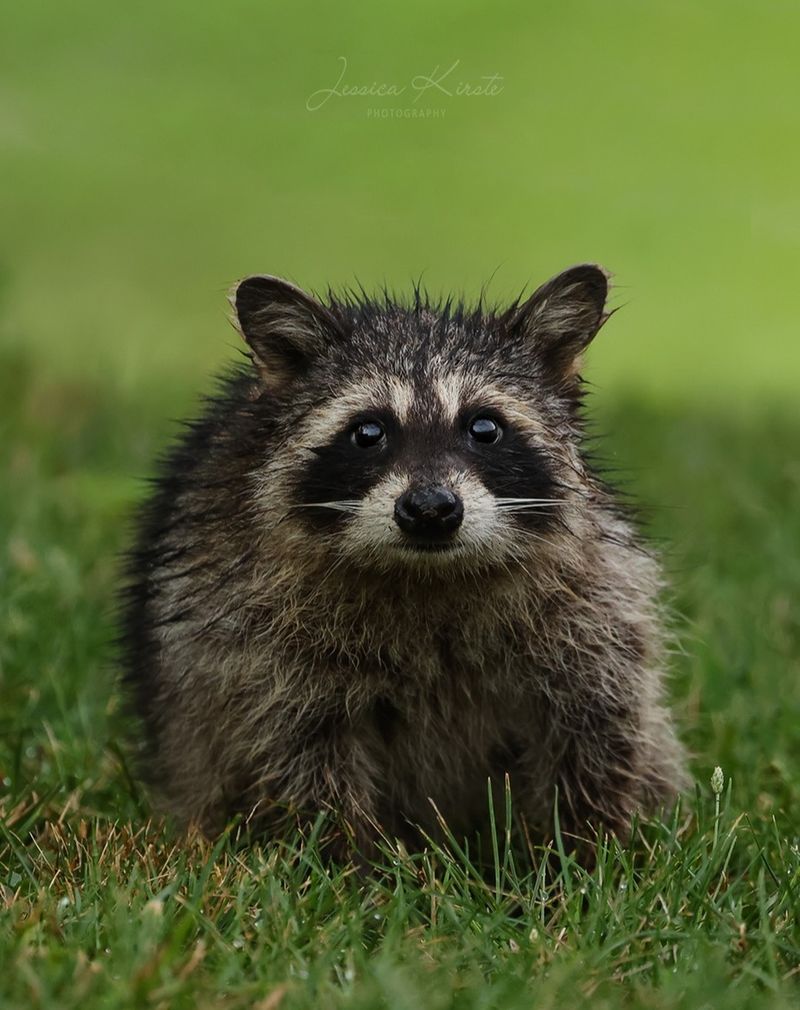
With their masked faces and nimble paws, raccoons are the mischievous bandits of the North American animal world. These adaptable mammals thrive in both wild and urban environments, showcasing their resourcefulness.
Raccoons are omnivorous, with diets ranging from fruits and insects to human leftovers. Known for their dexterous hands, they’re capable of opening containers and even access points to homes. Their clever antics and nocturnal habits often lead to unexpected encounters with humans.
Despite being considered pests in some areas, raccoons play a role in controlling insect and rodent populations. Their adaptability is a testament to their survival skills in changing landscapes.
11. American Black Bear
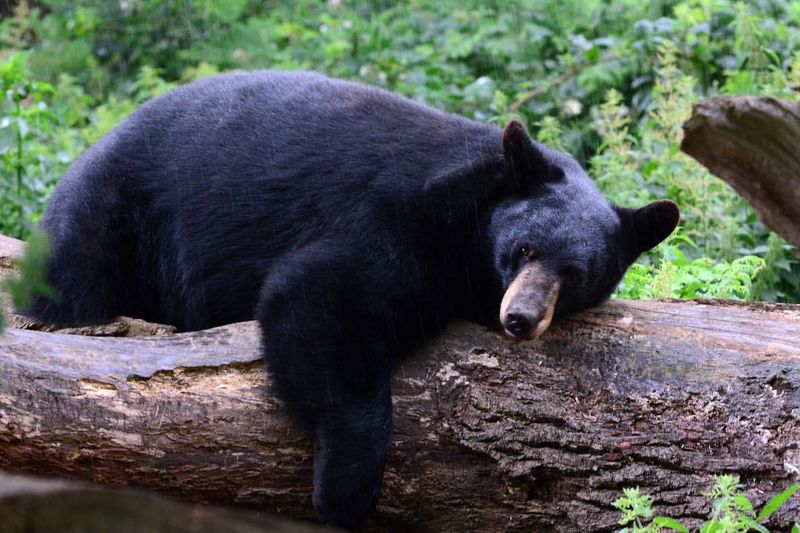
In the forested regions of North America, the American black bear ambles with a curious and playful demeanor. These adaptable omnivores thrive in diverse habitats, from dense woodlands to mountainous terrains.
Black bears primarily feed on plants, fruits, and insects, but they aren’t shy about scavenging for food. Despite their name, black bears can range in color from cinnamon to even white, adding a touch of surprise to their appearance.
Their playful nature often leads them to explore human areas, making them a common sight near campsites and rural communities. Conservation efforts focus on ensuring peaceful coexistence between humans and these bears.
Encountering a black bear in the wild offers a glimpse into a world where curiosity and caution dance hand in hand, reminding us of the delicate balance in nature.
12. Pronghorn
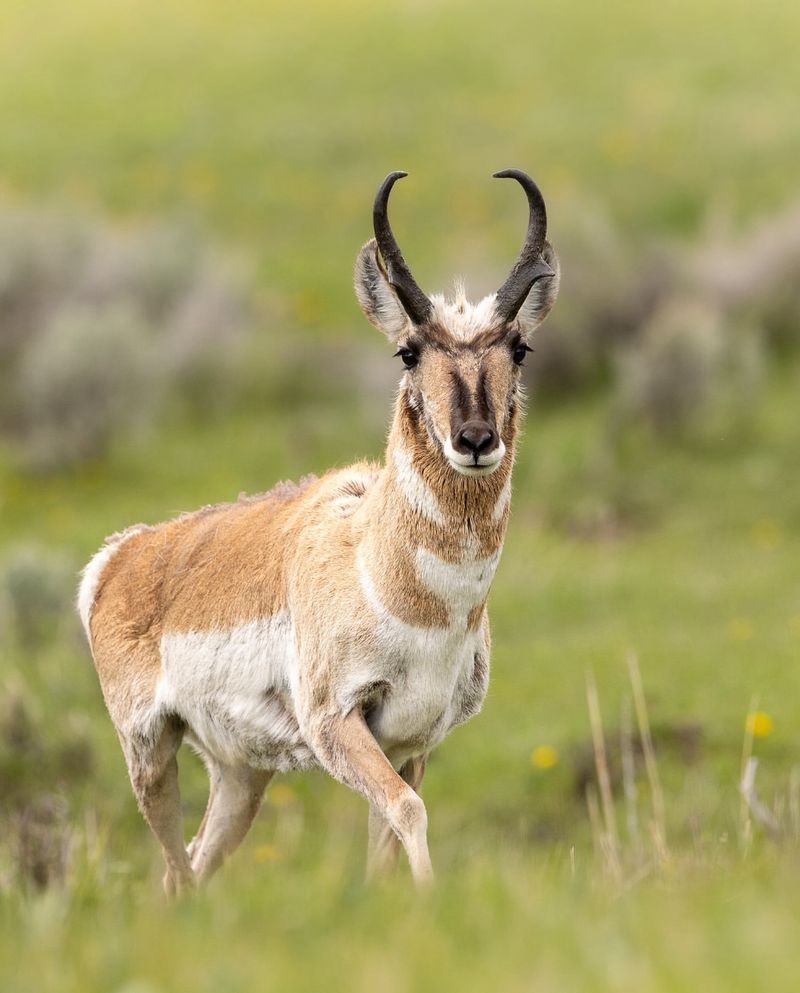
Meet the pronghorn, North America’s speedster of the plains. With their striking markings and sleek build, pronghorns are designed for speed, reaching up to 55 mph, making them the second-fastest land animal.
Despite their antelope-like appearance, pronghorns are unique to North America, roaming open prairies and grasslands. Their keen eyesight and swiftness help them evade predators, while their migratory patterns follow the rhythm of the seasons.
Once hunted to near extinction, pronghorn populations have rebounded due to conservation efforts. Observing pronghorns in full sprint is a breathtaking spectacle, a reminder of the enduring spirit and grace of nature’s creations.
13. Great Horned Owl
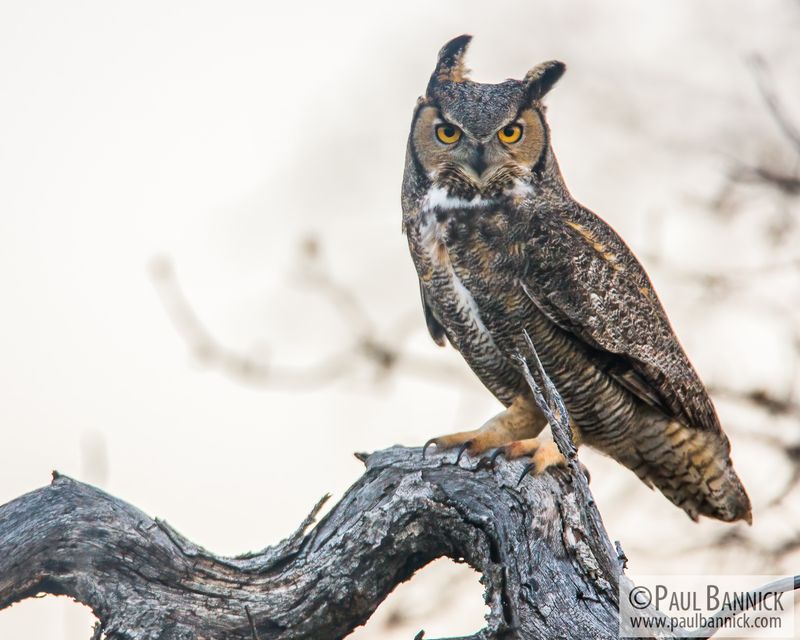
With piercing yellow eyes and iconic feather tufts, the great horned owl commands attention in the forests and deserts of North America. These formidable raptors are masters of the night, hunting with stealth and precision.
Great horned owls prey on a variety of animals, from rodents to larger mammals, showcasing their versatility as hunters. Their silent flight and powerful talons make them efficient predators, capable of snatching unsuspecting prey.
During the breeding season, their haunting hoots echo through the night, marking their territory. These owls are key players in controlling rodent populations, maintaining ecological balance.
14. Humpback Whale
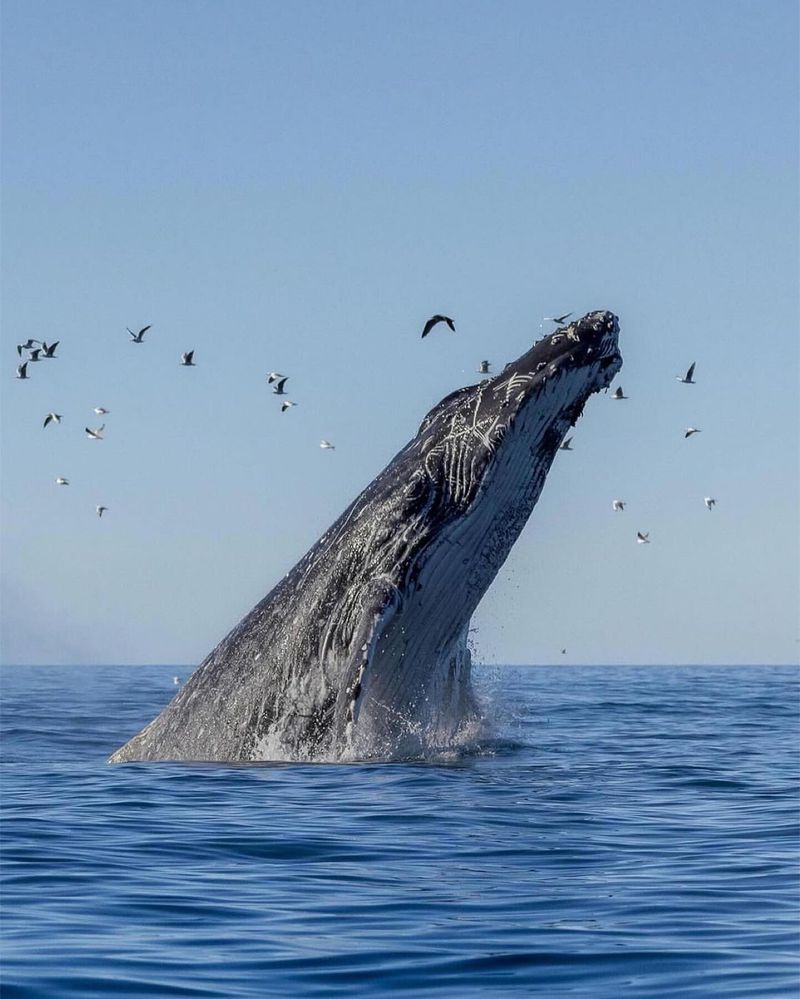
Diving into the depths of the ocean, the humpback whale emerges with grace and grandeur along North America’s coastlines. Known for their acrobatic breaches and haunting songs, these marine mammals captivate the hearts of whale watchers.
Humpback whales migrate vast distances, from feeding grounds in polar regions to breeding areas in tropical waters. Their complex songs, sung by males, are a phenomenon that continues to intrigue scientists and enthusiasts alike.
Despite past threats from whaling, humpback populations are recovering, thanks to international conservation efforts. Witnessing a humpback whale breach is an awe-inspiring event, a reminder of the incredible diversity and beauty that lies beneath the ocean’s surface.
Their presence in the oceanic realms speaks to the wonder and mystery of marine life.
15. Caribou
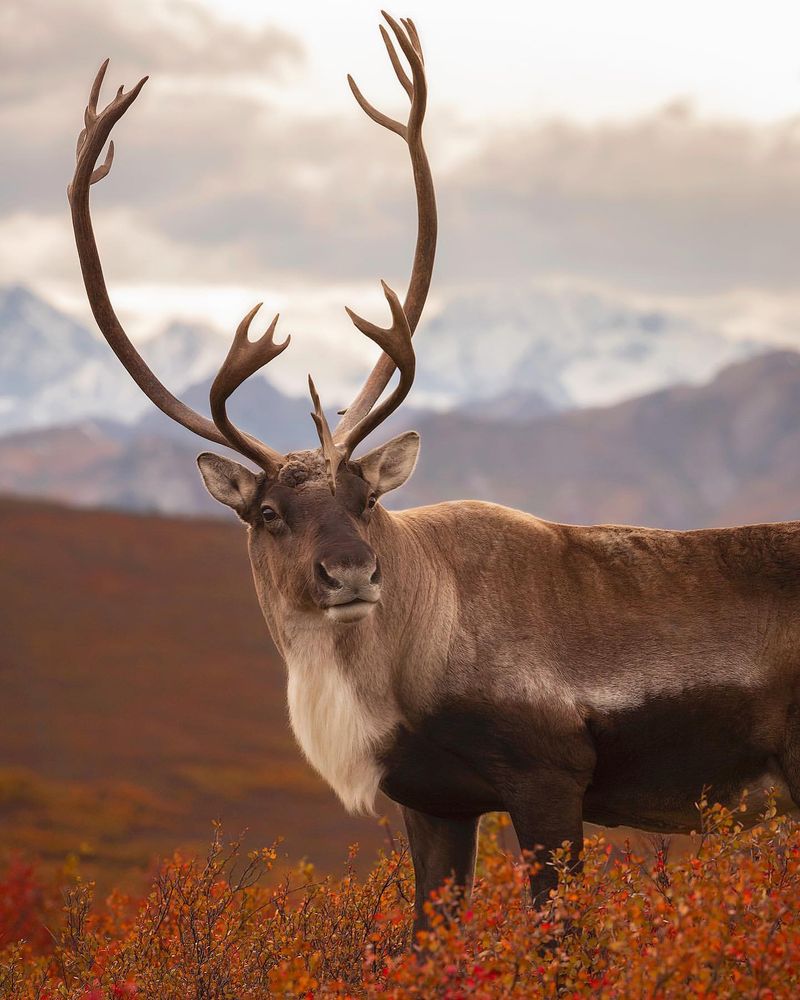
In the vast tundras and boreal forests of North America, the caribou embarks on its epic migrations, traversing landscapes with unmatched resilience. Known as reindeer in Europe, these iconic creatures are a symbol of endurance and survival.
Caribou are well-adapted to cold environments, with their thick fur and large hooves that aid in walking on snow. Their migratory journeys can cover thousands of miles, a testament to their endurance and the changing seasons.
Herds of caribou play a crucial role in their ecosystems, supporting predators and human communities alike. Conservation efforts focus on protecting their habitats from industrial impacts.


